BLOG - Page 30
Recently created mixtures:

Sea-Buckthorn Macerated oil
February 7, 2019

Home made air freshener
June 29, 2016

Homemade Dog-rose distillate
June 28, 2016

Homemade jasmine distillate
June 22, 2016

Moxibustion treatment with Moxa stick
May 30, 2016

Face and body gentle oil cleanser
May 26, 2016
BLOG / LATEST ADDITIONS!
Cabreuva Essential Oil (Myrocarpus Fastigiatus) ☸ Essential oils ☸ Base / General
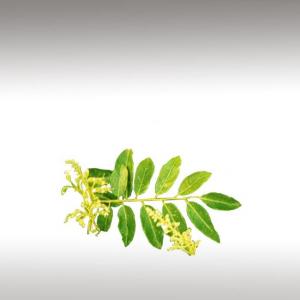

Botanical Name: Myrocarpus fastigiatus
Common Method of Extraction: Steam Distillation
Part Typically Used: Resin
Color: Pale yellow
Consistency: Medium liquid (thin)
Perfumery Note: Base / Middle
Strength of Initial Aroma: Sweet, woody, very delicate and slightly floral aroma.
Cabreuva is a tree found primarily in Paraguay. Country of origin Brazil.
Common Method of Extraction: Steam Distillation
Part Typically Used: Resin
Color: Pale yellow
Consistency: Medium liquid (thin)
Perfumery Note: Base / Middle
Strength of Initial Aroma: Sweet, woody, very delicate and slightly floral aroma.
Cabreuva is a tree found primarily in Paraguay. Country of origin Brazil.
Locally known as Incienso Rojo (Red Incense), Cabreuva is a tall tropical tree measuring up to 50 feet, extremely resistant to moisture and mould growth. Its avery well like wood beautiful flooring, expensive furniture and wood cravings. It is related to Copaiba. It is indigenous on South American counties like Chile, Paraguay, Argentina, Brazil.
Exfraction is steam distillation of the wood chips after the trees have been cut down for their wood.
The essential oil of Cabreuva (Myrocarpus Fastigiatus) is a pale yellow liquid displaying a delicate, suave, sweet woody bouquet with a balsamic, floral undertone of good tenacity.
In natural perfumery can be used in a wide range of perfume compositions due to its soft, round, delicately sweet bouquet. It is highly valued as a low cost fixative.
Submitted by OperaDreamhouse (February 2, 2015)
Black Currant Seed Oil (Ribes Nigrum) ☸ Base oils ☸ Base / General
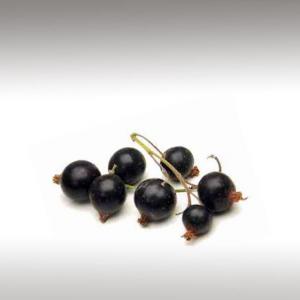

The Black Currant (Ribes Nigrum) is a woody shrub in the family Grossulariaceae grown for its piquant berries. It is native to temperate parts of central and northern Europe and northern Asia.
The Black Currant is native to northern Europe and Asia. It was in cultivation in Russia by the 11th century when it was present in monastery gardens and also grown in towns and settlements. Cultivation in Europe is thought to have started around the last decades of the 17th century.
Back in the early 1900’s the Black Currant was banned from growing. The ban was enacted when it was discovered that Black Currants helped to spread the tree disease.
White pine blister rust, which threatened the then booming U.S. lumber industry. In 1966 the ban was lifted so individual states could ban or not. Since the ban took place Black Currant is not abundantly known like in Europe or the UK. In the 19th Century it was used widely in the US. It was found that many of the Native Americans used Black Currant for many issues.
Ribes Nigrum, the Black Currant, is a medium sized shrub, growing to 1,5 metres. In midsummer the green fruit ripens to an edible berry up to 1 cm in diameter, very dark purple in colour, almost black, with a glossy skin and a persistent calyx at the apex, and containing several seeds dense in nutrients (notably Vitamin C). An established bush can produce about 4,5 kilograms of fruit each year.
Black Currant Seed oil is an ingredient in cosmetics and skin preparations, often in combination with Vitamin E.
Chemical structure:
The fruit has very high Vitamin C content (several times the recommended daily dietary reference intake per 100 g), good levels of potassium, phosphorus, iron, manganese and Vitamin B5, and a broad range of other essential nutrients.
Black Currant Seed oil is also rich in many nutrients, especially Vitamin E and several unsaturated fatty acids including alpha-linolenic acid and gamma-linolenic acid. Oil produced from Black Currant Seeds contains 13%omega-3 (ALA) and 17% omega-6 gamma-linolenic acid (GLA).
The Black Currant is native to northern Europe and Asia. It was in cultivation in Russia by the 11th century when it was present in monastery gardens and also grown in towns and settlements. Cultivation in Europe is thought to have started around the last decades of the 17th century.
Back in the early 1900’s the Black Currant was banned from growing. The ban was enacted when it was discovered that Black Currants helped to spread the tree disease.
White pine blister rust, which threatened the then booming U.S. lumber industry. In 1966 the ban was lifted so individual states could ban or not. Since the ban took place Black Currant is not abundantly known like in Europe or the UK. In the 19th Century it was used widely in the US. It was found that many of the Native Americans used Black Currant for many issues.
Ribes Nigrum, the Black Currant, is a medium sized shrub, growing to 1,5 metres. In midsummer the green fruit ripens to an edible berry up to 1 cm in diameter, very dark purple in colour, almost black, with a glossy skin and a persistent calyx at the apex, and containing several seeds dense in nutrients (notably Vitamin C). An established bush can produce about 4,5 kilograms of fruit each year.
Black Currant Seed oil is an ingredient in cosmetics and skin preparations, often in combination with Vitamin E.
Chemical structure:
The fruit has very high Vitamin C content (several times the recommended daily dietary reference intake per 100 g), good levels of potassium, phosphorus, iron, manganese and Vitamin B5, and a broad range of other essential nutrients.
Black Currant Seed oil is also rich in many nutrients, especially Vitamin E and several unsaturated fatty acids including alpha-linolenic acid and gamma-linolenic acid. Oil produced from Black Currant Seeds contains 13%omega-3 (ALA) and 17% omega-6 gamma-linolenic acid (GLA).
Submitted by OperaDreamhouse (February 1, 2015)
Brazil Nut Oil (Bertholletia Excelsa) ☸ Base oils ☸ Base / General
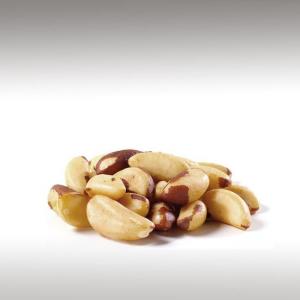

The Brazil Nut tree is the only species in the monotypic genus Bertholletia. It is native to the Guianas, Venezuela, Brazil, eastern Colombia, eastern Peru, and eastern Bolivia. The Brazil Nut is a large tree, reaching 50 m tall and with a trunk 1 to 2 in diameter, making it among the largest of trees in the Amazon rainforests. It may live for 500 years or more, and according to some authorities often reaches an age of 1,000 years.
In Brazil, it is illegal to cut down a Brazil Nut tree. As a result, they can be found outside production areas, in the backyards of homes and near roads and streets. The fruit containing nuts is very heavy and rigid, and it poses a serious threat to vehicles and persons passing under the tree.
The fruit takes 14 months to mature after pollination of the flowers. The fruit itself is a large capsule 10 - 15 cm in diameter, resembling a coconut endocarp in size and weighing up to 2 kg. It has a hard, woody shell 8 - 12 mm thick, which contains eight to 24 triangular seeds 4 - 5 cm long (the "Brazil Nuts") packed like the segments of an Orange. Around 20,000 tons of Brazil Nuts are harvested each year, of which Bolivia accounts for about 50%, Brazil 40%, and Peru 10%.
Chemical structure:
Brazil Nut oil contains 75% unsaturated fatty acids composed mainly of oleic and linolenic acids, as well as the phytosterol, beta-sitosterol, and fat-soluble Vitamin E. Brazil Nut oil is also rich in magnesium and has the highest known concentration of selenium of any nut oil.
Palmitic acid 16 - 20%
Palmitoleic acid 0,5 - 1,2%
Stearic acid 9 - 13%
Oleic acid 36 - 45%
Linoleic acid 33 - 38%
Saturated fats 25%
Unsaturated fats 75%
Brazil Nut oil is clear yellowish oil with a pleasant, sweet smell and taste. The three sided Brazil Nut with meat of flesh that consists of 70% fat or oil and 17% protein.
In Brazil, it is illegal to cut down a Brazil Nut tree. As a result, they can be found outside production areas, in the backyards of homes and near roads and streets. The fruit containing nuts is very heavy and rigid, and it poses a serious threat to vehicles and persons passing under the tree.
The fruit takes 14 months to mature after pollination of the flowers. The fruit itself is a large capsule 10 - 15 cm in diameter, resembling a coconut endocarp in size and weighing up to 2 kg. It has a hard, woody shell 8 - 12 mm thick, which contains eight to 24 triangular seeds 4 - 5 cm long (the "Brazil Nuts") packed like the segments of an Orange. Around 20,000 tons of Brazil Nuts are harvested each year, of which Bolivia accounts for about 50%, Brazil 40%, and Peru 10%.
Chemical structure:
Brazil Nut oil contains 75% unsaturated fatty acids composed mainly of oleic and linolenic acids, as well as the phytosterol, beta-sitosterol, and fat-soluble Vitamin E. Brazil Nut oil is also rich in magnesium and has the highest known concentration of selenium of any nut oil.
Palmitic acid 16 - 20%
Palmitoleic acid 0,5 - 1,2%
Stearic acid 9 - 13%
Oleic acid 36 - 45%
Linoleic acid 33 - 38%
Saturated fats 25%
Unsaturated fats 75%
Brazil Nut oil is clear yellowish oil with a pleasant, sweet smell and taste. The three sided Brazil Nut with meat of flesh that consists of 70% fat or oil and 17% protein.
Submitted by OperaDreamhouse (February 1, 2015)
Palm Oil (Elaeis Guineensis, Attalea Maripa, Elaeis Oleifera) ☸ Base oils ☸ Base / General
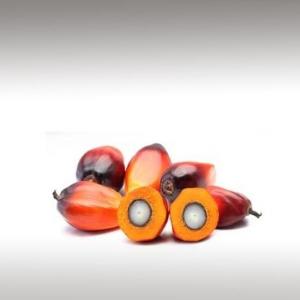

Palm oil is an edible vegetable oil derived from the Mesocarp (Reddish pulp) of the fruit of the oil palms, primarily the African oil palm Elaeis guineensis, and to a lesser extent from the American oil Palm (Elaeis Oleifera) and the Maripa Palm (Attalea Maripa).
Human use of oil Palms may date as far back as 5,000 years. In the late 1800s, archaeologists discovered a substance that they concluded was originally palm oil in a tomb at Abydos dating back to 3,000 BCE. It is thought that Arab traders brought the oil Palm to Egypt.
Indonesia is the largest producer of Palm oil, Malaysia is the world's second largest producer of Palm oil.
The Palm oil industry has had both positive and negative impacts on workers, indigenous peoples and residents of Palm oil - producing communities.
Palm oil cultivation has been criticized for impacts on the natural environment, including deforestation, loss of natural habitats, which has threatened critically endangered species such as the Orangutan and Sumatran Tiger, and increased greenhouse gas emissions.
Environmental groups such as Greenpeace and Friends of the Earth oppose the use of Palm oil biofuels, claiming that the deforestation caused by oil Palm plantations is more damaging for the climate than the benefits gained by switching to biofuel and utilizing the Palms as carbon sinks.
Elaeis Guineensis is a species of palm commonly called African Oil Palm or Macaw-fat. It is the principal source of Palm oil. It is native to west and southwest Africa, specifically the area between Angola and the Gambia. The species is also now naturalised in Madagascar, Sri Lanka, Malaysia, Sumatra, Central America, the West Indies and several islands in the Indian and Pacific Oceans.
Mature palms are single-stemmed and grow to 20 m tall. The leaves are pinnate and reach between 3 - 5 m long. A young palm produces about 30 leaves a year. The Palm fruit takes five to six months to mature from pollination to maturity. It is reddish, about the size of a large Plum, and grows in large bunches. Each fruit is made up of anoily, fleshy outer layer (the pericarp), with a single seed (the Palm kernel), also rich in oil. When ripe, each bunch of fruit weighs 40 - 50 kg.
Elaeis Oleifera is a species of Palm commonly called the American Oil Palm. It is native to South and Central America from Honduras to northern Brazil.
Unlike its relative Elaeis Guineensis, the African Oil Palm, it is rarely planted commercially to produce Palm oil, but hybrids between the two species are, mainly in efforts to provide disease resistance and to increase the proportion of unsaturatedfatty acids in the oil.
Attalea Maripa, commonly called Maripa Palm is a palm native to tropical South America and Trinidad and Tobago. It grows up 35 m tall and can have leaves or fronds 10 - 12 m long. This plant has a yellow edible fruit which is oblong ovoid and cream. An edible oil can be extracted from the pulp of the fruit.
It is present in Colombia, Venezuela, Guyana, Suriname, French Guiana, Ecuador, Peru and Brazil. It is found in lowland forests and disturbed areas, on soils that are not usually flooded.
Carbonised Attalea Maripa seeds have been found in archaeological sites in Colombia dating back to 9000 BP. The Huaorani of Amazonian Ecuador use the mesocarps for food.
Chemical structure:
Palm oil like all fats, is composed of fatty acids, esterified with glycerol. Palm oil has an especially high concentration of saturated fat, specifically, of the 16-carbon saturated fatty acid palmitic acid, to which it gives its name. Monounsaturated oleic acid is also a major constituent of Palm oil. Unrefined Palm oil is a large natural source of tocotrienol, part of the Vitamin E family.
Palm oil is naturally reddish in color because of a high beta-carotene content. Like Tomatoes, Carrots and many other fruits and vegetables but unlike most oils, Palm oil naturally contains the nutrients alpha-carotene, beta-carotene and lycopene. Palm oil contains other carotenes including tocopherols and tocotrienols (members of the Vitamin E family), CoQ10, phytosterols, and glycolipids.
Human use of oil Palms may date as far back as 5,000 years. In the late 1800s, archaeologists discovered a substance that they concluded was originally palm oil in a tomb at Abydos dating back to 3,000 BCE. It is thought that Arab traders brought the oil Palm to Egypt.
Indonesia is the largest producer of Palm oil, Malaysia is the world's second largest producer of Palm oil.
The Palm oil industry has had both positive and negative impacts on workers, indigenous peoples and residents of Palm oil - producing communities.
Palm oil cultivation has been criticized for impacts on the natural environment, including deforestation, loss of natural habitats, which has threatened critically endangered species such as the Orangutan and Sumatran Tiger, and increased greenhouse gas emissions.
Environmental groups such as Greenpeace and Friends of the Earth oppose the use of Palm oil biofuels, claiming that the deforestation caused by oil Palm plantations is more damaging for the climate than the benefits gained by switching to biofuel and utilizing the Palms as carbon sinks.
Elaeis Guineensis is a species of palm commonly called African Oil Palm or Macaw-fat. It is the principal source of Palm oil. It is native to west and southwest Africa, specifically the area between Angola and the Gambia. The species is also now naturalised in Madagascar, Sri Lanka, Malaysia, Sumatra, Central America, the West Indies and several islands in the Indian and Pacific Oceans.
Mature palms are single-stemmed and grow to 20 m tall. The leaves are pinnate and reach between 3 - 5 m long. A young palm produces about 30 leaves a year. The Palm fruit takes five to six months to mature from pollination to maturity. It is reddish, about the size of a large Plum, and grows in large bunches. Each fruit is made up of anoily, fleshy outer layer (the pericarp), with a single seed (the Palm kernel), also rich in oil. When ripe, each bunch of fruit weighs 40 - 50 kg.
Elaeis Oleifera is a species of Palm commonly called the American Oil Palm. It is native to South and Central America from Honduras to northern Brazil.
Unlike its relative Elaeis Guineensis, the African Oil Palm, it is rarely planted commercially to produce Palm oil, but hybrids between the two species are, mainly in efforts to provide disease resistance and to increase the proportion of unsaturatedfatty acids in the oil.
Attalea Maripa, commonly called Maripa Palm is a palm native to tropical South America and Trinidad and Tobago. It grows up 35 m tall and can have leaves or fronds 10 - 12 m long. This plant has a yellow edible fruit which is oblong ovoid and cream. An edible oil can be extracted from the pulp of the fruit.
It is present in Colombia, Venezuela, Guyana, Suriname, French Guiana, Ecuador, Peru and Brazil. It is found in lowland forests and disturbed areas, on soils that are not usually flooded.
Carbonised Attalea Maripa seeds have been found in archaeological sites in Colombia dating back to 9000 BP. The Huaorani of Amazonian Ecuador use the mesocarps for food.
Chemical structure:
Palm oil like all fats, is composed of fatty acids, esterified with glycerol. Palm oil has an especially high concentration of saturated fat, specifically, of the 16-carbon saturated fatty acid palmitic acid, to which it gives its name. Monounsaturated oleic acid is also a major constituent of Palm oil. Unrefined Palm oil is a large natural source of tocotrienol, part of the Vitamin E family.
Palm oil is naturally reddish in color because of a high beta-carotene content. Like Tomatoes, Carrots and many other fruits and vegetables but unlike most oils, Palm oil naturally contains the nutrients alpha-carotene, beta-carotene and lycopene. Palm oil contains other carotenes including tocopherols and tocotrienols (members of the Vitamin E family), CoQ10, phytosterols, and glycolipids.
Submitted by OperaDreamhouse (January 31, 2015)
Babassu Seed Oil (Attalea Speciosa) ☸ Base oils ☸ Base / General
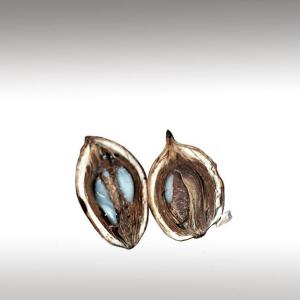

Attalea Speciosa (Babassu, Babassu Palm, Babaçu, Cusi) is a palm native to the Amazon Rainforest region in South America. The Babassu Palm is the predominant species in the Maranhão Babaçu forests of Maranhão and Piauí states. It is generally found in tropical humid climates, along rivers and valley floors.
Babassu is an erect perennial evergreen palm, reaching 15 to 30 m high. The trunk is slender, ringed with leaf scars 20 - 50 cm in diameter. A dense rounded crown, 8 m in diameter, is formed by 15 - 20 huge leaves up to 9 m long. Bunches are 1 m long, weigh 40 - 90 kg and bear 250 to 600 fruits twice a year. The fruits are oblong nuts (8 -15 cm long x 5 - 9 cm broad) containing 3 - 8 kernels surrounded by fleshy pulp and a hard woody shell, similar to the Coconut shell.
Babassu starts yielding after 8 years and reaches full production within 15 - 20 years. One ton of nuts yield 10 % kernels containing 60 - 70 % oil. In Brazil, mature fruits start to drop between August and November and continue to fall until the rainy season begins in January and February.
Because Babassu trees grow in dense jungles, the collection and transport of the nuts is difficult.
The kernels must be well dried before oil extraction in order to prevent rancidity. Most of the kernel removal is still done by hand. Its seeds yield a kind of oil commercially known as Babassu oil. In order to extract it, the seeds, picked from spontaneously grown palms, are ground and squeezed by means of hydraulic presses.
This oil, whose content per seed ranges between 60% and 70%, looks transparent, it smells like Walnuts and turns liquid at 20 - 30°C, otherwise it is somewhat creamy. As it is not greasy and possesses remarkable softening properties, Babassu oil is widely employed, notably to prepare cosmetics. Like Coconut oil, unrefined Babassu oil is solid at room temperature.
It is high in lauric and myristic acid.
Babassu is an erect perennial evergreen palm, reaching 15 to 30 m high. The trunk is slender, ringed with leaf scars 20 - 50 cm in diameter. A dense rounded crown, 8 m in diameter, is formed by 15 - 20 huge leaves up to 9 m long. Bunches are 1 m long, weigh 40 - 90 kg and bear 250 to 600 fruits twice a year. The fruits are oblong nuts (8 -15 cm long x 5 - 9 cm broad) containing 3 - 8 kernels surrounded by fleshy pulp and a hard woody shell, similar to the Coconut shell.
Babassu starts yielding after 8 years and reaches full production within 15 - 20 years. One ton of nuts yield 10 % kernels containing 60 - 70 % oil. In Brazil, mature fruits start to drop between August and November and continue to fall until the rainy season begins in January and February.
Because Babassu trees grow in dense jungles, the collection and transport of the nuts is difficult.
The kernels must be well dried before oil extraction in order to prevent rancidity. Most of the kernel removal is still done by hand. Its seeds yield a kind of oil commercially known as Babassu oil. In order to extract it, the seeds, picked from spontaneously grown palms, are ground and squeezed by means of hydraulic presses.
This oil, whose content per seed ranges between 60% and 70%, looks transparent, it smells like Walnuts and turns liquid at 20 - 30°C, otherwise it is somewhat creamy. As it is not greasy and possesses remarkable softening properties, Babassu oil is widely employed, notably to prepare cosmetics. Like Coconut oil, unrefined Babassu oil is solid at room temperature.
It is high in lauric and myristic acid.
Submitted by OperaDreamhouse (January 31, 2015)
Sacha Inchi Seed Oil (Plukenetia Volubilis Linneo) ☸ Base oils ☸ Base / General
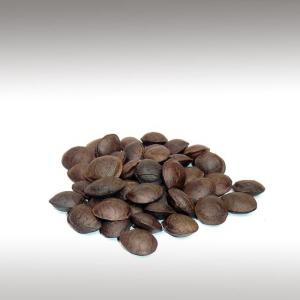

Plukenetia Volubilis, commonly known as Sacha Inchi, Sacha Peanut, Mountain Peanut or Inca-Peanut, is a perennial plant with somewhat hairy leaves, in the Euphorbiaceae. The Sacha Inchi plant is indigenous to the Peruvian Amazon Forest, and produces small nuts that are extremely rich in high quality, nutritious vegetable oil.
Peru is one of the ten most bio diverse countries in the world with eighty-four ecosystems and twenty-eight distinct climate zones. This biodiversity encapsulates an immense variety of plants and animals, many of which are still unknown to man.
This plant is cultivated mainly in the district of Pichanaqui (Junin - Peru) at the heart of the Inca culture, because this land offers the best environmental conditions (the ground is soft and has a high content of minerals and some nutrients).
In the Amazon Rainforest in Peru, it has been cultivated by indigenous people for centuries. It grows better in acidic soils and alluvial flats near rivers. The plant reaches a height of 2 m, with alternate, heart shaped, serrated leaves.
The fruits are capsules of 3 to 5 cm in diameter with 4 to 7 points, are green and ripen blackish brown. On ripening, the fruits contain a soft black wet pulp that is messy and inedible, so are normally left to dry on the plant before harvest.
By two years of age, often up to a hundred dried fruits can be harvested at a time, giving 400 to 500 seeds a few times a year. Fruit capsules usually consist of four to five lobes, but some may have up to seven. Inside are the seeds, oval, dark-brown.
Sacha Inchi has been cultivated and used as a food source for 3,000 years in the Amazon rainforest.The Incas represented Sacha Inchi seed in their ceramics.
The fruit that these seeds grow in is inedible, but when lightly roasted with low heat the seeds take on a crisp nutty flavor.
Chancas Indians and other tribal groups of the region extract oil from the seeds which is used for the preparation of various meals. Sacha Inchi seed has a high oil content - more than 50% - more oil can be obtained therefore, more omega - 3.
The oil is extracted by simple cold pressing and does not require refining.
Current scientific studies indicate that the Inca Inchi is the best oil plant because of its composition and high nutritional quality. Often marketed as a "Superfood" Sacha Inchi is said to offer a variety of health benefits.
Chemical structure:
The seeds of Inchi have high protein (27%) and oil (35 - 60%) content, and the oil is rich in the essential fatty acids omega - 3 linolenic acid(45 - 53% of total fat content) and omega - 6 linoleic acid (34 - 39% of fat content), as well as non-essential omega - 9 (6 - 10% of fat content). They are also rich in iodine, vitamin A and vitamin E.
Sacha Inchi oil is valued as a nutritional supplement because it contains a high concentration of polyunsaturated fatty acids, making it an excellent source for omega - 3 and Omega - 6. It contains no cholesterol.
Peru is one of the ten most bio diverse countries in the world with eighty-four ecosystems and twenty-eight distinct climate zones. This biodiversity encapsulates an immense variety of plants and animals, many of which are still unknown to man.
This plant is cultivated mainly in the district of Pichanaqui (Junin - Peru) at the heart of the Inca culture, because this land offers the best environmental conditions (the ground is soft and has a high content of minerals and some nutrients).
In the Amazon Rainforest in Peru, it has been cultivated by indigenous people for centuries. It grows better in acidic soils and alluvial flats near rivers. The plant reaches a height of 2 m, with alternate, heart shaped, serrated leaves.
The fruits are capsules of 3 to 5 cm in diameter with 4 to 7 points, are green and ripen blackish brown. On ripening, the fruits contain a soft black wet pulp that is messy and inedible, so are normally left to dry on the plant before harvest.
By two years of age, often up to a hundred dried fruits can be harvested at a time, giving 400 to 500 seeds a few times a year. Fruit capsules usually consist of four to five lobes, but some may have up to seven. Inside are the seeds, oval, dark-brown.
Sacha Inchi has been cultivated and used as a food source for 3,000 years in the Amazon rainforest.The Incas represented Sacha Inchi seed in their ceramics.
The fruit that these seeds grow in is inedible, but when lightly roasted with low heat the seeds take on a crisp nutty flavor.
Chancas Indians and other tribal groups of the region extract oil from the seeds which is used for the preparation of various meals. Sacha Inchi seed has a high oil content - more than 50% - more oil can be obtained therefore, more omega - 3.
The oil is extracted by simple cold pressing and does not require refining.
Current scientific studies indicate that the Inca Inchi is the best oil plant because of its composition and high nutritional quality. Often marketed as a "Superfood" Sacha Inchi is said to offer a variety of health benefits.
Chemical structure:
The seeds of Inchi have high protein (27%) and oil (35 - 60%) content, and the oil is rich in the essential fatty acids omega - 3 linolenic acid(45 - 53% of total fat content) and omega - 6 linoleic acid (34 - 39% of fat content), as well as non-essential omega - 9 (6 - 10% of fat content). They are also rich in iodine, vitamin A and vitamin E.
Sacha Inchi oil is valued as a nutritional supplement because it contains a high concentration of polyunsaturated fatty acids, making it an excellent source for omega - 3 and Omega - 6. It contains no cholesterol.
Submitted by OperaDreamhouse (January 31, 2015)
Black Sesame Seed Oil (Sesamum Indicum L.) ☸ Base oils ☸ Base / General
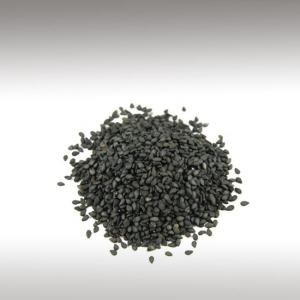

Black Sesame Seeds (Sesamum Indicum L.) are similar to the more common White Sesame Seeds. Black Sesame Seeds are not hulled, brown (golden) Sesame Seeds retain their hulls too, and the white seeds are hulled which exposes their true seed color. Lighter colored Sesame Seeds are used more in the West and in the Middle East, and the Black Sesame Seeds are more popular in Far East cuisine.
The black and darker coloured Sesame Seeds are mostly produced in China and southeast Asia. Africa produces a variety of Sesame Seeds.
The black and darker coloured Sesame Seeds are mostly produced in China and southeast Asia. Africa produces a variety of Sesame Seeds.
Actually it refers to dry mature seeds of Sesamum indicum L., a plant under the genus Sesamum of the family Pedaliaceae. It plants are usually harvested during autumn when the fruits at the peak of their ripeness. And next dry them in the sun, knock out of the seeds, remove impurities, and then dry in the sun once again.
It is flat oval, about 3mm long and 2mm wide. Surface is black and smooth or with netted wrinkles. Seed coat is thin. Cotyledons are two, white, and rich in oil. It has slight odor, sweet taste, and oil aroma.
Chemical structure:
Black Sesame Seeds contain about 60% more calcium than hulled Sesame Seeds. Black Sesame Seeds are more flavorful and have a stronger aroma than White or Brown Sesame Seeds.
Black Sesame Seeds are rich in a fatty oil. Oil content is high, between 40% and 60%. The oil has a distinctive flavor, and is rich in antioxidants which give it a long shelf life. The seeds also enjoy a long shelf life and resist rancidity. After removing the oil, seeds are 35% to 50% protein.
Beneficial Nutritions is good source of copper, manganese, calcium, magnesium, iron, phosphorus, zinc, vitamin B1 (thiamin), dietary fiber.
Antioxidants substances like sesamol, sesamolin and sesaminol can be find in Sesamum Indicum L. The Black Sesame coat has the greater relative antioxidant potential.
It is flat oval, about 3mm long and 2mm wide. Surface is black and smooth or with netted wrinkles. Seed coat is thin. Cotyledons are two, white, and rich in oil. It has slight odor, sweet taste, and oil aroma.
Chemical structure:
Black Sesame Seeds contain about 60% more calcium than hulled Sesame Seeds. Black Sesame Seeds are more flavorful and have a stronger aroma than White or Brown Sesame Seeds.
Black Sesame Seeds are rich in a fatty oil. Oil content is high, between 40% and 60%. The oil has a distinctive flavor, and is rich in antioxidants which give it a long shelf life. The seeds also enjoy a long shelf life and resist rancidity. After removing the oil, seeds are 35% to 50% protein.
Beneficial Nutritions is good source of copper, manganese, calcium, magnesium, iron, phosphorus, zinc, vitamin B1 (thiamin), dietary fiber.
Antioxidants substances like sesamol, sesamolin and sesaminol can be find in Sesamum Indicum L. The Black Sesame coat has the greater relative antioxidant potential.
Submitted by OperaDreamhouse (January 30, 2015)
Black Cumin Seed Oil (Bunium Bulbocastanum) ☸ Base oils ☸ Base / General
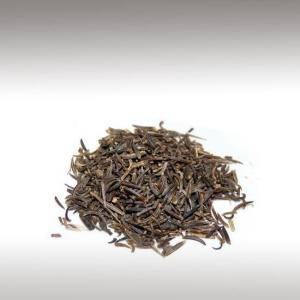

Bunium Bulbocastanum is a plant species in the family Apiaceae. It is related to Cumin (Cuminum Cyminum) and commonly called Black Cumin, Blackseed, Black Caraway, or Great Pignut, and has a smoky, earthy taste. It is often confused with Nigella Sativa (which is also called Black Cumin, Blackseed).
The plant grows wild in a wide range from southeastern Europe east to southern Asia. It reaches about 60 centimetres tall and 25 centimetres wide.
The fruit of plant, the Black seeds is used for extracting the oil. Black seed contains over 100 valuable nutrients including significant proportions of protein, carbohydrates and essential fatty acids.
Fruits: Both the dark brown colour and the slender crescent shape are characteristic. In Kashmir, the root is eaten as a vegetable.
The most common Indic name for this spice is Kala Jira - "Black Cumin". The same name is, most often in English, sometimes given to an entirely unrelated spice, Nigella (also called Onion seed). Bengali Kalo Jira and similar names in South India actually refer to Nigella. Nigella is popular in the Middle East and Northern India, particularly Bengal.
Black Cumin, in India also called Kashmiri Cumin, is not much known outside Iran, Tajikistan, Afghanistan, Pakistan and the western part of Northern India (Kashmir, Punjab). In use for over 4,000 years, Cumin was mainly used for its digestive properties and as a spice.
Chemical strukture:
Thymoquinone, nigellone, oleic acid, linoleic acid, calcium, iron, potassium, zinc, selenium, magnesium, Vitamin A, Vitamin B, niacin, Vitamin B2 and Vitamin C.
The plant grows wild in a wide range from southeastern Europe east to southern Asia. It reaches about 60 centimetres tall and 25 centimetres wide.
The fruit of plant, the Black seeds is used for extracting the oil. Black seed contains over 100 valuable nutrients including significant proportions of protein, carbohydrates and essential fatty acids.
Fruits: Both the dark brown colour and the slender crescent shape are characteristic. In Kashmir, the root is eaten as a vegetable.
The most common Indic name for this spice is Kala Jira - "Black Cumin". The same name is, most often in English, sometimes given to an entirely unrelated spice, Nigella (also called Onion seed). Bengali Kalo Jira and similar names in South India actually refer to Nigella. Nigella is popular in the Middle East and Northern India, particularly Bengal.
Black Cumin, in India also called Kashmiri Cumin, is not much known outside Iran, Tajikistan, Afghanistan, Pakistan and the western part of Northern India (Kashmir, Punjab). In use for over 4,000 years, Cumin was mainly used for its digestive properties and as a spice.
Chemical strukture:
Thymoquinone, nigellone, oleic acid, linoleic acid, calcium, iron, potassium, zinc, selenium, magnesium, Vitamin A, Vitamin B, niacin, Vitamin B2 and Vitamin C.
Submitted by OperaDreamhouse (January 30, 2015)
Indian lotus Absolute (Nelumbo Nucifera) ☸ Essential oils ☸ Spiritual Practises


Lotus is the national flower of India. No other plant figures so prominently in Asian religions as the Lotus. Both Hindus and Buddhists regard it as a sacred symbol and use it not only in offerings but also in countless art forms.
In Buddhist symbolism, the lotus represents purity of the body, speech, and mind as if floating above the muddy waters of attachment and desire. According to legend, Gautama Buddha was born with the ability to walk, and lotus flowers bloomed everywhere he stepped.
The Chakras of the body are visualized in meditation as different petaled Lotuses. The Pink Lotus gently opens emotional knots of the heart.
Lotus absolute is considered sacred by the Hindus for its exquisite perfume and its ability to beckon the mind into stillness, clarity, and devotion.
Pink Lotus (Nelumbo Nucifera) possesses an amazing ability to flourish in a variety of environments ranging from clear ponds to muddy marshes. How can the flowers be so pure and delicate above the waters while its roots are in the mud. It's mystical, like a symbol, that something good can come after darkness. Lotus symbolizes purity, beauty, majesty, grace, fertility, wealth, richness, knowledge and serenity Lotus is a sacred flower for Hindus and Buddhists.
Lotus is a symbol of enlightenment, its beauty considered a medicine for the soul. A mystical, magical ingredient indeed is Lotus in the creation of the finest anointing oils and sacred perfumes.
In Buddhist symbolism, the lotus represents purity of the body, speech, and mind as if floating above the muddy waters of attachment and desire. According to legend, Gautama Buddha was born with the ability to walk, and lotus flowers bloomed everywhere he stepped.
The Chakras of the body are visualized in meditation as different petaled Lotuses. The Pink Lotus gently opens emotional knots of the heart.
Lotus absolute is considered sacred by the Hindus for its exquisite perfume and its ability to beckon the mind into stillness, clarity, and devotion.
Pink Lotus (Nelumbo Nucifera) possesses an amazing ability to flourish in a variety of environments ranging from clear ponds to muddy marshes. How can the flowers be so pure and delicate above the waters while its roots are in the mud. It's mystical, like a symbol, that something good can come after darkness. Lotus symbolizes purity, beauty, majesty, grace, fertility, wealth, richness, knowledge and serenity Lotus is a sacred flower for Hindus and Buddhists.
Lotus is a symbol of enlightenment, its beauty considered a medicine for the soul. A mystical, magical ingredient indeed is Lotus in the creation of the finest anointing oils and sacred perfumes.
Submitted by OperaDreamhouse (January 29, 2015)
Sandalwood Essential Oil (Santalum Austrocaledonicum) ☸ Essential oils ☸ Spiritual Practises
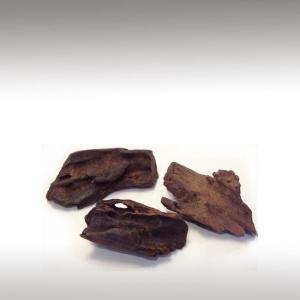

Sandalwood essential oil has been used in cultural and spiritual
ceremonies for centuries. Opens Sacral Chakra. Good for meditation,
astral projection, manifesting, blessings, house cleansings and
releasing the past. Dispels negativity.
Evolution of the spirit is achieved through awakening the Kundalini and taming sexual energies.
On an energetic level, Sandalwood aligns and balances the center of Sacral Chakra's feminine energies with the masculine energies of the Root Chakra. This alignment frees up the Kundalini's reserve of energy, wrapped around the base of the spine. By liberating this energy, it becomes able to take root and to connect with the heart.
Sandalwood calms the fire of sexual desire and brings a feeling of completeness, which eases the process of learning the meaning of True love.
Helps visualization and meditation by slowing down “mental hyperactivity”. It also reinforces the link between the Crown and Base Chakra. The smell of sandal wood brings a sense of exotic sensuality and calmness.
Sandalwood is used in the preparation of spiritual and self-healing work.
The tree's fragrant wood has been used since time immemorial in religious rituals. Buddhists view it as one of the three fundamental incense materials, along with Cloves and Agarwood.
When used in aromatherapy it induces mind-focussing and emotion-calming effects.
Evolution of the spirit is achieved through awakening the Kundalini and taming sexual energies.
On an energetic level, Sandalwood aligns and balances the center of Sacral Chakra's feminine energies with the masculine energies of the Root Chakra. This alignment frees up the Kundalini's reserve of energy, wrapped around the base of the spine. By liberating this energy, it becomes able to take root and to connect with the heart.
Sandalwood calms the fire of sexual desire and brings a feeling of completeness, which eases the process of learning the meaning of True love.
Helps visualization and meditation by slowing down “mental hyperactivity”. It also reinforces the link between the Crown and Base Chakra. The smell of sandal wood brings a sense of exotic sensuality and calmness.
Sandalwood is used in the preparation of spiritual and self-healing work.
The tree's fragrant wood has been used since time immemorial in religious rituals. Buddhists view it as one of the three fundamental incense materials, along with Cloves and Agarwood.
When used in aromatherapy it induces mind-focussing and emotion-calming effects.
Submitted by OperaDreamhouse (January 29, 2015)
Neroli Essential Oil (Citrus Aurantium) ☸ Essential oils ☸ Medicine / Health
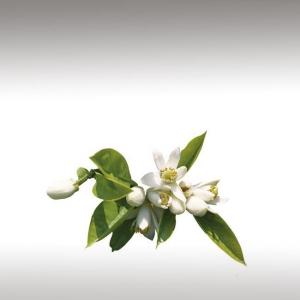

Neroli is one of the few essential oils to be scientifically proven to increase serotonin production in the brain. As with all aromatherapy, however, the power of suggestion and individual preferences play an important part in how effective this might be.
Serotonin is an important, mood-altering neurotransmitter, and increased levels of it enhance our feelings of serenity and well-being. It is believed that the tradition of bridal Orange blossom garlands started because the fragrance soothed the nerves of the young brides.
Serotonin is an important, mood-altering neurotransmitter, and increased levels of it enhance our feelings of serenity and well-being. It is believed that the tradition of bridal Orange blossom garlands started because the fragrance soothed the nerves of the young brides.
Submitted by OperaDreamhouse (January 28, 2015)
Neroli Essential Oil (Citrus Aurantium) ☸ Essential oils ☸ Food / Cooking


Neroli essential oil commonly used in foods such as marmalade, pancakes, custard, in eaude colognes. Neroli oil is reportedly one of the ingredients in the closely guarded secret recipe for the Coca-Cola soft drink.
Submitted by OperaDreamhouse (January 28, 2015)
Beeswax (Cera Alba) ☸ Ingredients ☸ Medicine / Health
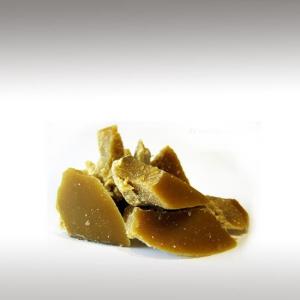

Beeswax's anti-inflammatory, antibacterial, anti-allergenic, and germicidal antioxidant properties make it beneficial for wound healing. Even after processing, Beeswax still remains a biologically active product, retaining some anti-bacterial properties. It is reported that Beeswax contains some Vitamin A, which is necessary for normal cell development.
Like the Honey it houses, Beeswax has therapeutic properties. It is particularly effective in healing bruises, inflammation and burns.
As medicine, Beeswax is used for lowering cholesterol and for relieving pain. It is also used for swelling (inflammation), ulcers, diarrhea, and hiccups. There is also some evidence that it might help protect the stomach.
Beewax is full of a substance called Propolis. Propolis is the substance that bees use to stop their hives from becoming infected with bacteria and viruses. Propolis is a complex substance that is made by the bee as it journeys around different plants and trees.
Beeswax is an ingredient in surgical bone wax, which is used during surgery to control bleeding from bone surfaces.
Like the Honey it houses, Beeswax has therapeutic properties. It is particularly effective in healing bruises, inflammation and burns.
As medicine, Beeswax is used for lowering cholesterol and for relieving pain. It is also used for swelling (inflammation), ulcers, diarrhea, and hiccups. There is also some evidence that it might help protect the stomach.
Beewax is full of a substance called Propolis. Propolis is the substance that bees use to stop their hives from becoming infected with bacteria and viruses. Propolis is a complex substance that is made by the bee as it journeys around different plants and trees.
Beeswax is an ingredient in surgical bone wax, which is used during surgery to control bleeding from bone surfaces.
Submitted by OperaDreamhouse (October 30, 2014)
Beeswax (Cera Alba) ☸ Ingredients ☸ Beauty / Cosmetics


Beeswax is used in lip balm, lip gloss, hand creams, and moisturizers; and in cosmetics such as eye shadow, blush, and eye liner. Beeswax is an important ingredient in moustache Wax and hair pomades, which make hair look sleek and shiny.
Beeswax gives a rich emollient quality to creams, which is very useful for dry skin. Deeply moisturizing, it also creates a waterproof barrier on the skin. Beeswax effectively softens skin and creates a long-lasting protective coating against the elements. It also is a naturally nourishing moisturizer.
It was part of the first cosmetic cream, created by Greek physician, Galen, in 150 AD. The cream consisted of Beeswax and Olive oil with Water (or Rose Water) beaten into it. Because it cooled the skin, it was dubbed "Cold Cream", but it also soften and moisturize, too.
Beeswax soothes and protects the skin from dryness without inhibiting its ability to breathe. It also serves as an emulsifier.
These Waxes also increase the thickness of the lipid (oil) portion of solid and stick-like products such as lipstick, giving them structure, allowing for a smooth application, and keeping them solid.
When used in eye makeup, the Waxes stiffen but do not harden the product, and the flexibility and plasticity of the Waxes facilitate application. These waxes may also function in depilatory products to remove unwanted hair mechanically.
The oil-gelling properties of Beeswax are also helpful for stabilizing water-in-oil emulsions for skin and hair applications and for texturizing effects. Beeswax is also used as a means of enhancing texture and adding volume in mascara and make-up.
Beeswax absolute is used as a fragrance in soaps and perfumes.
These Waxes also increase the thickness of the lipid (oil) portion of solid and stick-like products such as lipstick, giving them structure, allowing for a smooth application, and keeping them solid.
When used in eye makeup, the Waxes stiffen but do not harden the product, and the flexibility and plasticity of the Waxes facilitate application. These waxes may also function in depilatory products to remove unwanted hair mechanically.
The oil-gelling properties of Beeswax are also helpful for stabilizing water-in-oil emulsions for skin and hair applications and for texturizing effects. Beeswax is also used as a means of enhancing texture and adding volume in mascara and make-up.
Beeswax absolute is used as a fragrance in soaps and perfumes.
Submitted by OperaDreamhouse (October 30, 2014)
Aloe Vera (Aloe Barbadensis) ☸ Ingredients ☸ Food / Cooking
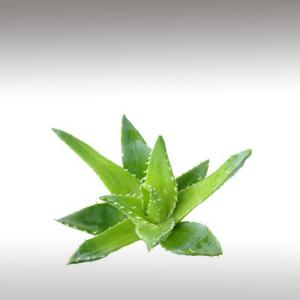

Aloe Vera gel is used commercially as an ingredient in yogurts, beverages, and some desserts.
Aloe Vera juice is marketed to support the health of the digestive system. The extracts and quantities typically used for such purposes appear to be dose-dependent for toxic effects.
Aloe Vera juice is marketed to support the health of the digestive system. The extracts and quantities typically used for such purposes appear to be dose-dependent for toxic effects.
The juice is said to be one of the finest body cleansers, cleaning morbid matter from the stomach, liver, kidneys, spleen, bladder, and is considered the finest, known colon cleanser.
Submitted by OperaDreamhouse (October 30, 2014)
Page 30 of 48

